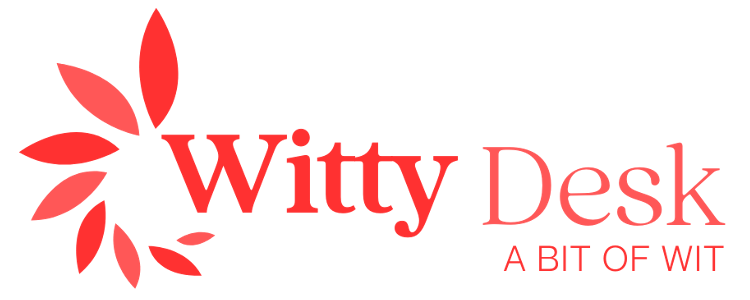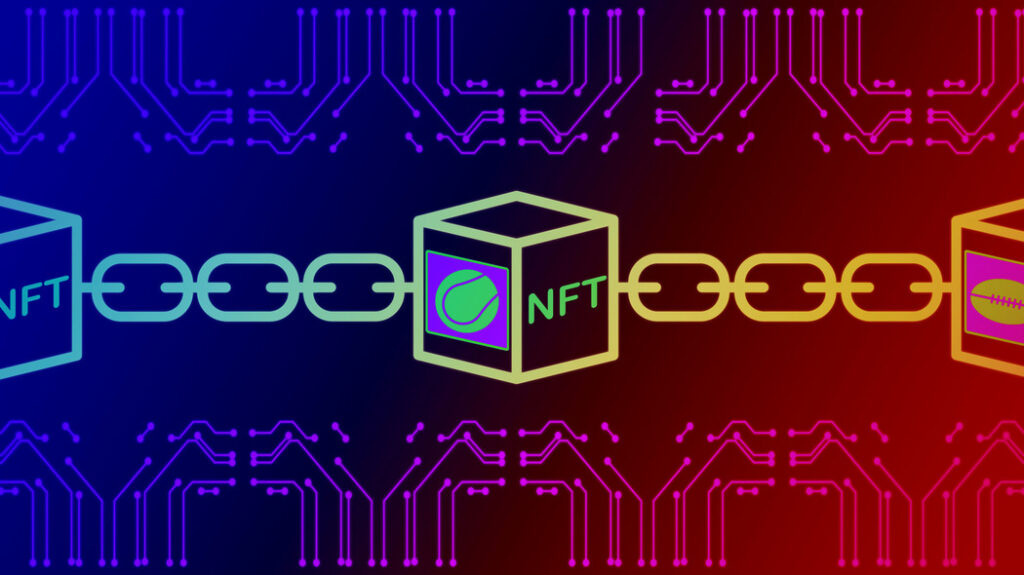The transformation of the world related to creativity and innovation involves NFTs (non-fungible tokens) as the central driving force. Audiences, creators, and artists in the modern world are offered new methods of interacting with art, within NFTs provide value, protection, and showcase attributes. Monetizable NFTs do not only provide new opportunities, but they also shift paradigms towards distinct ownership, artistic expression, financial independence, and creativity.
From the inception of this blog, we will observe how NFTs are transforming the world of creativity by empowering magnificent artists and exploring the vast oceans of previously unimaginable opportunities. Witnessing the great shift NFTs are bringing to diverse creative industries like art, music, film, and beyond helps us understand their profound value. By the conclusion of this post, the reason behind the rapid rise of NFTs will be elaborated thoroughly.
A Brief Overview of NFTs:
To comprehensively evaluate the options NFTs are providing for creators, it is important to understand their definition first. NFTs or Non-Fungible Tokens are one-of-a-kind digital tokens verified through blockchain technology, which functions as a digital ledger documenting various transactions. NFTs cannot be equated on a one-for-one basis because each token contains particular attributes, features, or data. Unlike Bitcoin or Ethereum which are “fungible” or identical in value, NFTs are distinct and incomparable. Rather, think of them as digital collectibles but instead of a tangible item like a trading card, they exist in an intangible digital form.
The creative industry values NFTs mostly due to their uniqueness which is solely captured in a digital token. Each of these assets represents a specific work of art, music, video, or even a piece of writing and their ownership is authenticated and tracked using blockchain technology, ensuring its uniqueness and scarcity. This transforms the opportunities available for creators and collectors, completely changing how we interact and perceive art.
Preserving Intellectual Property with NFTs:
Preserving an artist’s or creator’s work has never been easier with the rise of blockchain technology. As history dates back, intellectual property has often been exploited by a variety of people and entities. Human beings have always found ways to copy and forge new apparel of artworks such as paintings, songs, and poetry. Due to the NFT movement, these resources can protected, as these tokens allow people to claim ownership of a digital piece of work which can be collected, traded, or sold in numerous marketplaces such as OpenSea, Rarible, and Foundation. Unlike traditional methods, NFT eliminates the need for publishers, galleries, or record labels.
By using blockchain, artists can keep track of their earnings as each sale or transfer of their work grants them shares of profit. This era of finance has granted the public with countless success stories such as Beeple, a digital artist who sold his NFT artwork for mind-boggling amount of $69 million at Christie’s auction. Beyond financial benefits, NFTs provide creators with direct access to a global audience, enabling them to connect with fans and customers without traditional gatekeepers standing in the way.
New Forms of Creative Expression:
NFTs are not just changing ownership; they are paving the way for novel forms of creative expression. A digital artist is no more bound by the paint, sculpture, or even film. With NFTs, creators can explore and create works that can change or respond to their owners’ interactions. One such innovation made possible by NFTs is programmable art, where pieces are designed to change over time or through user action.
Outside of digital art, creators from every corner of the industry are using blockchain technology to tell stories in new ways. Writers are developing books in the form of NFTs, each fragment becoming part of a larger interactive experience. Game developers are integrating them into virtual realms or metaverses, allowing players to trade and own digital assets. The scope for creating and experimenting is vast, and the result is a more agile and accessible art world full of possibilities.
Ownership of Digital Art and NFTs:
Digital art ownership was quite complicated and tedious to navigate before NFTs and remains a challenge even today. Ownership is a fundamental idea that NFTs are transforming concerning creation. NFTs has consolidasted the ownership problem by associating digital assets to a blockchain. With the endless copying and sharing of digital art, claiming ownership over works of art was next to impossible. Every single NFT is like a certificate of authenticity which alleviates the problem of digital scarcity by validating the original owner.
For the collectors, possessing an NFT indicates holding an unprecedented and unmatched piece of digital content. The underlying technology validates that ownership in the blockchain is unchangeable and absolute. This model of investment has gained a lot of traction, especially with modern art enthusiasts, which has led to the establishment of markets classified as collectibles. NFTs are creating extensive opportunities for investors and art lovers, ranging from pixelated avatars like CryptoPunks to futuristic visions, everyone can find something.
NFTs in Music, Film, and More:
While the bulk of attention goes to the visual arts, NFTs have a far-reaching impact on other industries too. For instance, musicians are now releasing albums or tracks as NFTs, thus providing fans exclusive ownership, while creating new revenue streams. By converting music to NFTs, artists can sell directly to their audience, be it singles, exclusive editions, or even semi-private content like a documentary or a ‘making of’ video. Kings of Leon and Grimes are already leveraging this technology, strengthening ties with their audiences while monetizing their work in innovative ways.
Just as with musicians, filmmakers and other content producers are looking at how to incorporate NFTs into their business models. Directors fund some of their projects by selling NFTs attached to scenes, memorabilia, or other exclusive content. Even gaming companies are adopting NFTs to allow users to trade game virtual items such as skins, weapons, or even land. The use of NFTs in these numerous contexts proves their adaptability and potential to provide answers across sectors.
Challenges and Criticisms of NFTs:
NFTs as a new technology come with some set of challenges. Probably the biggest challenge is to do with their environmental effect. The minting, purchasing, or even trading of an NFT usually involves a blockchain network such as Ethereum, which consumes a lot of energy. This creates concern about how sustainable the usage of NFTs can be using ecosystems and even more troubling is the idea of growing demand. Solutions such as moving to more environmentally friendly blockchain networks are being suggested, but for now remain untested.
Another common problem is overcoming a relatively low level of accessibility. The inclusivity promised by NFTs is not materializing and instead many artists and buyers remain priced out by high gas fees associated with minting NFTs. Furthermore, people are divided regarding whether NFTs have any value or are simply a bubble driven by irrational speculation. Achieving sustainable and equitable growth in that space will require greater collaboration and continued efforts by stakeholders.
Future of NFTs in the Creative Industries:
As technology companies develop innovative frameworks for integrating blockchain technology, we can expect further investment from the creative industries and mainstream culture to fuel economic growth. There is also the increasing possibility of NFTs finding space in museums, galleries, and other forms of physical marketing. Policies that decrease the ecological footprint of NFTs, increase accessibility, and regulate them further enables the ecosystem to become more sustainable.
With the advancement of the Metaverse and Web3, NFTs will play a critical role in shaping our future digital spaces, from virtual galleries to in-game fashion. The ability to purchase and display digital art will continue to grow as the concept of owning unique digital fashion items for avatars becomes pervasive. The horizons of growth for adopters willing to change become boundless.
NFTs Revolutionizing Creativity:
The very definition of art is being molded by the existence of NFTs right before our eyes. The structural frameworks that exist for creating, curating, and consuming art are being shattered. NFTs are firmly knitted into that reformation. The creative world has already started feeling the impact of financial opportunities emerging dynamically, artistic expression, curation, and the formation of a global community. Even as NFTs face backlash it remains a promising future for art.
Whether you are an artist, a collector, or simply interested in the NFT world, it is time to take an innovative leap. The revolution is already visible, yet this is only the inception.
FAQs:
1. What exactly is an NFT?
NFTs or non-fungible tokens are digital certificational assets representing ownership of a one-of-a-kind piece of content like an artwork, music track, or video. NFTs are verified through blockchain technology which guarantees their uniqueness.
2. In what ways do NFTs help level up an artist?
Artists can capitalize on the power of NFTs to sell their creations to the masses while blockchain enables them to secure continuous royalties on resale and safeguard ownership claims.
3. Are NFTs harmful to the environment?
Yes and no. Although it may be true that most Blockchain networks consume too much power, there is a development for eco-friendly solutions to solve this issue.
4. Are NFTs limited to artworks?
Not at all! NFTs can span several industries like music, film, gaming, and even real estate, providing novel solutions and ownership paradigms in each field.
5. What does the world of NFT and the future of NFTs hold for us?
As technology advances and adoption keeps on increasing, it is anticipated that NFTs will become an integral part of Web 3.0 enabling entirely new possibilities for interaction with art, content, and each other.

